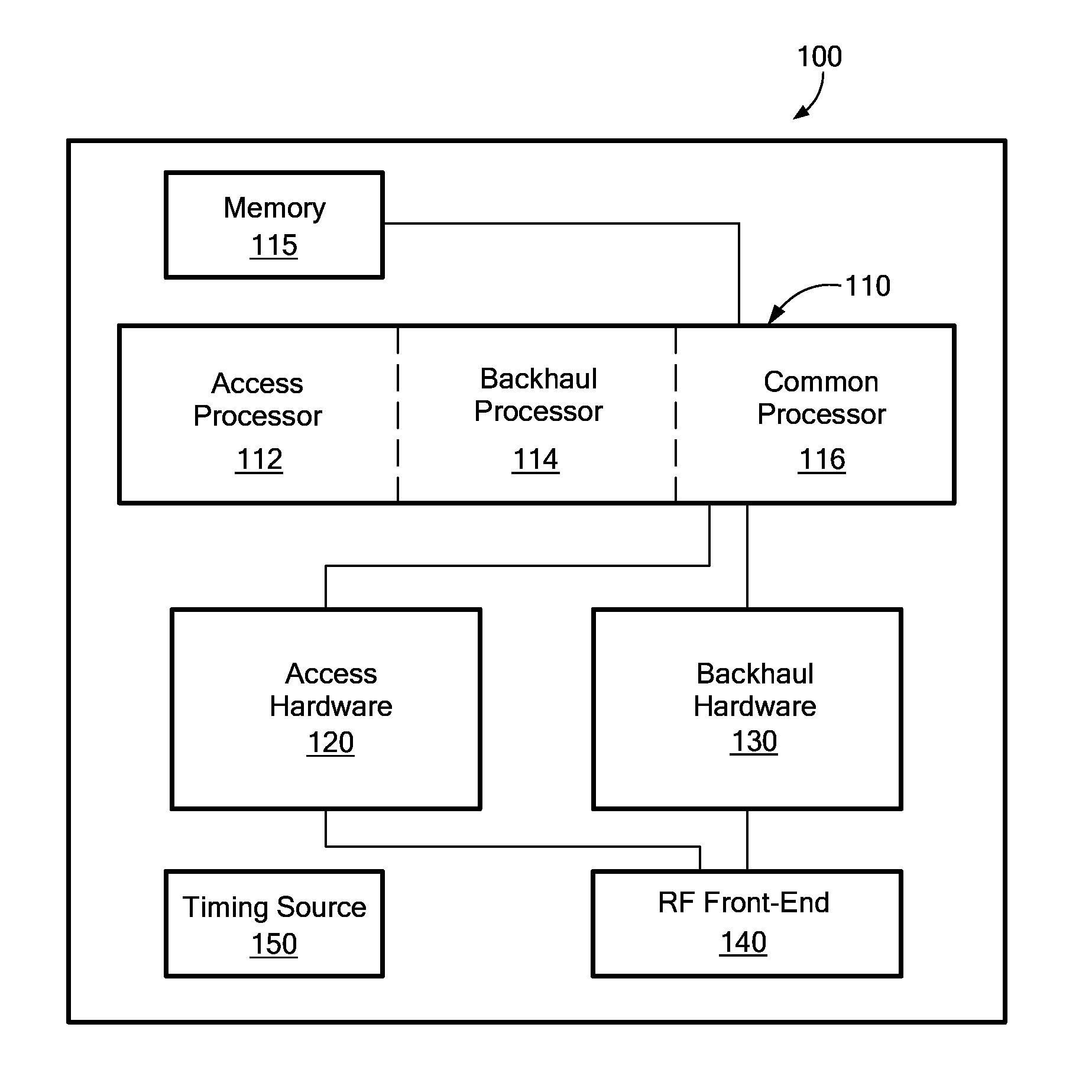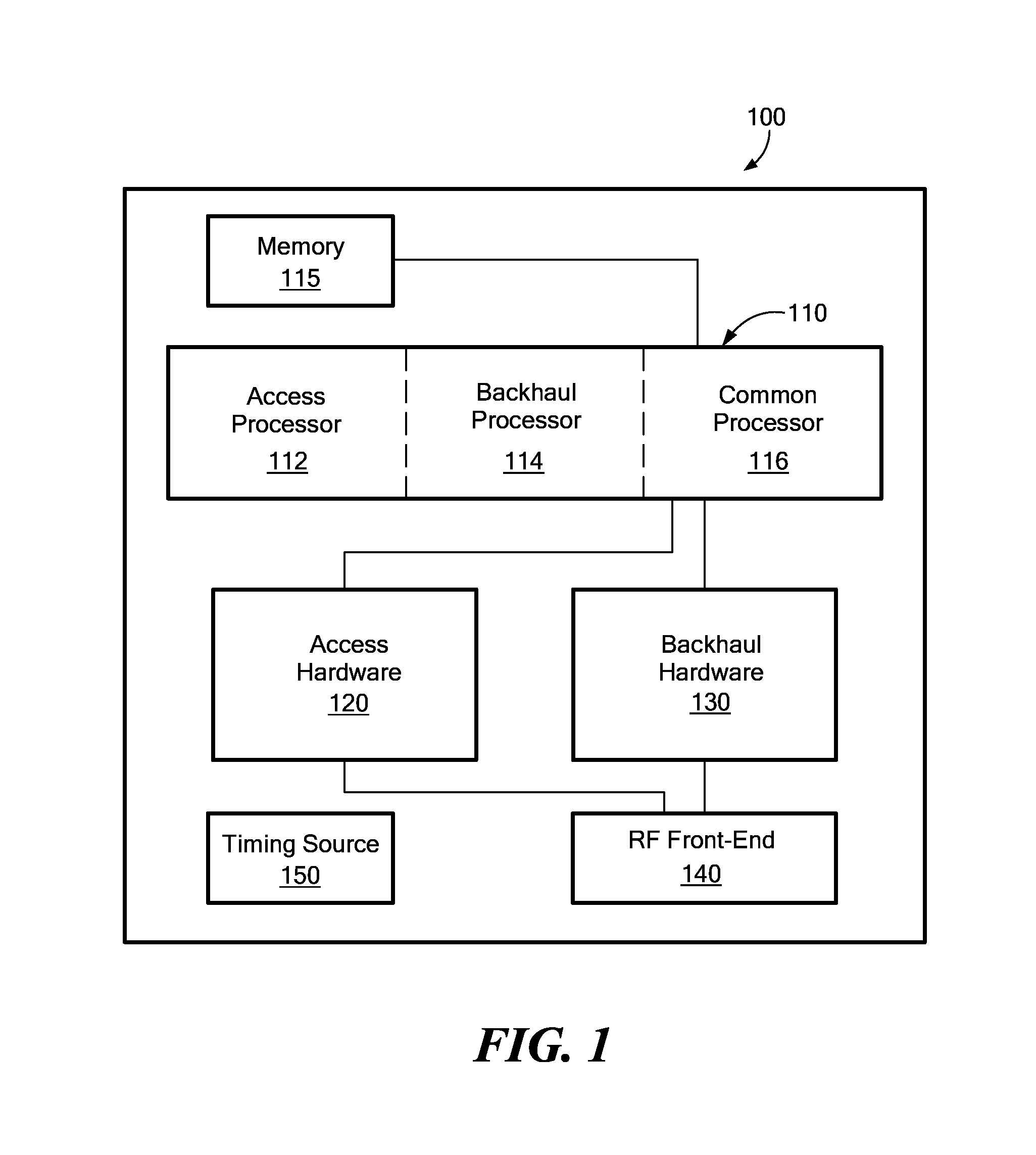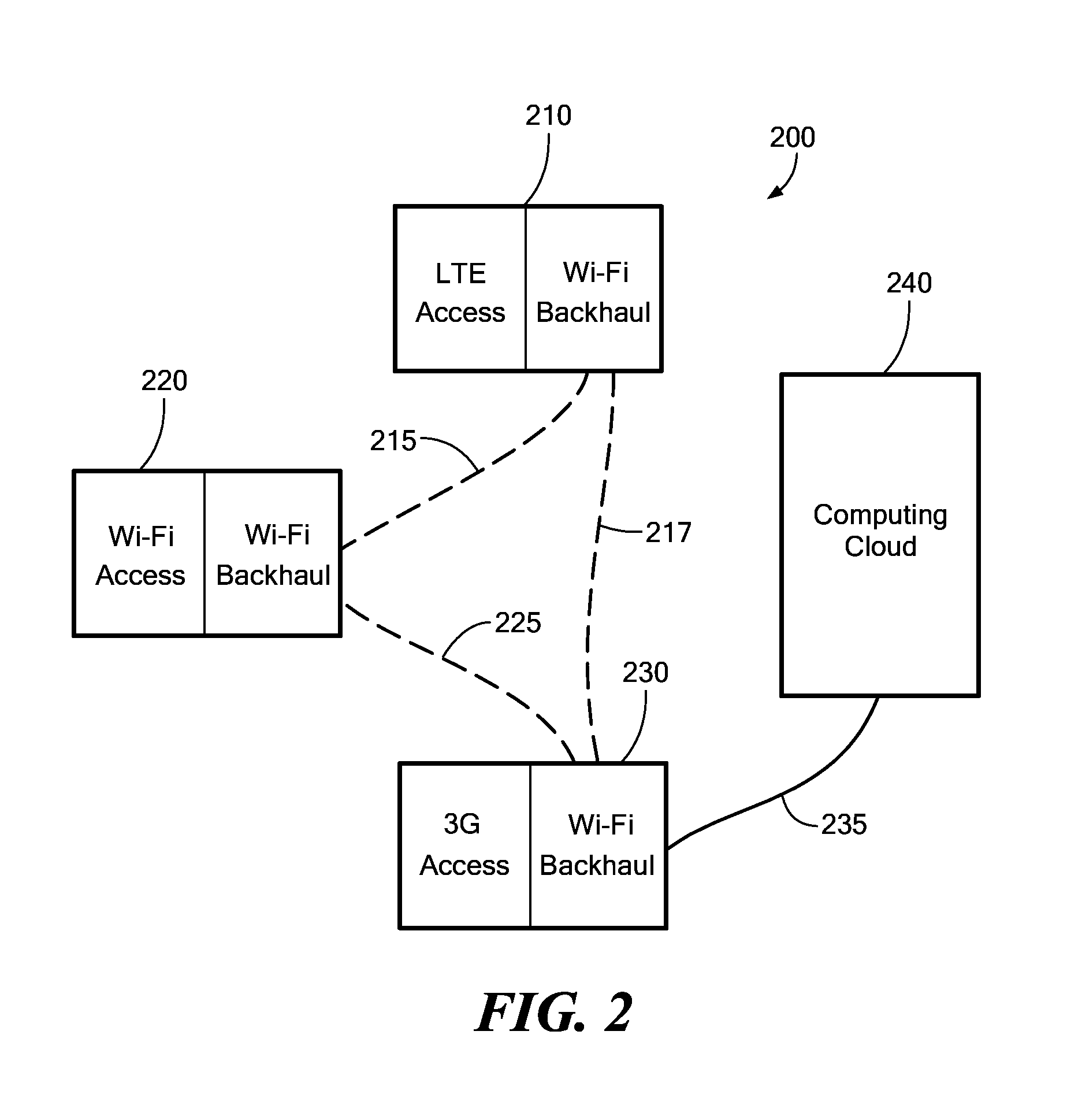Heterogeneous Self-Organizing Network for Access and Backhaul
- Summary
- Abstract
- Description
- Claims
- Application Information
AI Technical Summary
Benefits of technology
Problems solved by technology
Method used
Image
Examples
Embodiment Construction
[0025]The systems and methods disclosed herein can be used with heterogeneous mesh networks. Although mesh networks have been deployed in the past, these networks have not contained nodes capable of autonomously using SON techniques, nor have they contained nodes capable of working jointly with a computing cloud component. Before discussing the specifics of the architecture, we will provide some background information on the mesh networks within which our SON modules will operate. The mesh networks of the present invention are capable of: (1) operating on white-space frequencies; (2) dynamically switching roles; (3) autonomously using SON techniques; (4) operating within a heterogeneous environment; and (5) using layered SON modules in conjunction with a computing cloud or a software defined network server.
[0026]The mesh networks of this invention differ conceptually from prior art gateway paradigms because the custom designed layer stacks of this invention abstract the protocols th...
PUM
 Login to View More
Login to View More Abstract
Description
Claims
Application Information
 Login to View More
Login to View More - R&D
- Intellectual Property
- Life Sciences
- Materials
- Tech Scout
- Unparalleled Data Quality
- Higher Quality Content
- 60% Fewer Hallucinations
Browse by: Latest US Patents, China's latest patents, Technical Efficacy Thesaurus, Application Domain, Technology Topic, Popular Technical Reports.
© 2025 PatSnap. All rights reserved.Legal|Privacy policy|Modern Slavery Act Transparency Statement|Sitemap|About US| Contact US: help@patsnap.com



